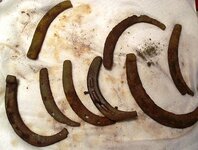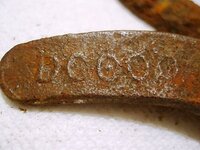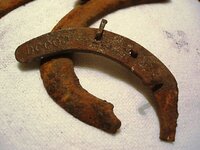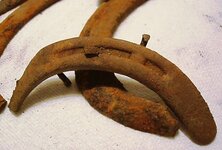cornspike
Full Member
- Jan 23, 2008
- 156
- 2
- Detector(s) used
- Fisher F-70, 5in dd coil.
- Primary Interest:
- All Treasure Hunting
Got a bunch of broken shoe's today, one shoe has some numbers on it, does anyone know why? Can anyone tell what years these shoe's are from? Thanks for looking








